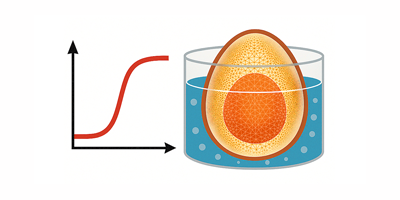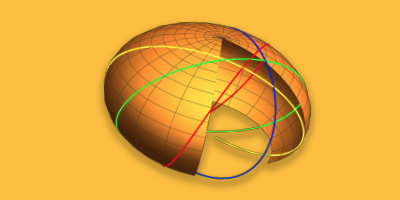Teacher Resources for Introducing Computational Thinking and Data Science
As many teachers make the transition back into classes after the holidays, quite a few have plans to update lessons to include segments that introduce data science concepts. Why, you ask?
According to a LinkedIn report published last week, the most promising job in the US in 2019 is data scientist. And if you search for the top “hard skills” needed for 2019, data science is often in the top 10.
Data science, applied computation, predictive analytics… no matter what you call it, in a nutshell it’s gathering insight from data through analysis and knowing what questions to ask to get the right answers. As technology continues to advance, the career landscape also continues to evolve with a greater emphasis on data—so data science has quickly become an essential skill that’s popping up in all sorts of careers, including engineering, business, astronomy, athletics, marketing, economics, farming, meteorology, urban planning, sociology and nursing.

Face it: much of our world is now driven by data. So what does this mean for teachers? We need to equip our children with the tools they’ll need to navigate this changing world, and Wolfram is here to help!
Teaching Computational Thinking
Computational thinking is an integral part of data science because before we can use a computer to analyze data and solve problems, we need to understand enough about the problem we’re trying to solve, which questions to ask and the steps we must take to answer them in order to tell the computer how to do it.
Back in 2016, Stephen Wolfram wrote, “Computational thinking is going to be a defining feature of the future—and it’s an incredibly important thing to be teaching to kids today.” And boy, was he right!
But where do you start? Here are some resources we’ve put together that can help.
- Introduce computational thinking — ComputationalThinking.org can help you develop custom computational thinking problem-solving modules, deliver computational thinking courses and train teachers on Wolfram technology and computational thinking approaches. You can even see inside and download a module that you can start using in your course right away.
- Tech-Based Teaching — Learn about new concepts and techniques from teachers and members of the tech industry for introducing computational thinking to students inheriting a data-driven world.
- Computational thinking resources for teaching — Find programs and lesson plans for teachers to introduce computational thinking in the classroom with Wolfram technology.
-

Wolfram Challenges — These bite-sized Challenges are a great way for students to practice their computational thinking skills and start thinking outside the box. While knowledge of the Wolfram Language is beneficial, each Challenge includes suggestions for functions to use and examples to help students get started.
Interested in more resources? Here are a few others.
Rooted in Math
While students don’t need a PhD in math to start learning data science, if they want to do data science they’re going to have to deal with at least some math. And what better way to do that than with Mathematica and the Wolfram Language, central tools for math and science education for over three decades? Not sure if you have access to Mathematica at your campus? Find out if you do.
Here are a few resources your students can use to enhance their math (and Mathematica) skills.
-

Fast Introduction for Math Students — Students can use this online tutorial to learn about solving math problems in the Wolfram Language—from basic arithmetic to integral calculus and beyond.
 Introduction to Calculus course — Some concepts in data science require calculus, like derivatives, gradients and optimization. This free massive open online course (MOOC) provides a comprehensive introduction to fundamental concepts in calculus through video lessons, exercises and quizzes, and interactive notebooks. Students can even earn a certificate by watching all lesson and problem session videos and completing the quizzes with a passing grade.
Introduction to Calculus course — Some concepts in data science require calculus, like derivatives, gradients and optimization. This free massive open online course (MOOC) provides a comprehensive introduction to fundamental concepts in calculus through video lessons, exercises and quizzes, and interactive notebooks. Students can even earn a certificate by watching all lesson and problem session videos and completing the quizzes with a passing grade.
-

Wolfram Problem Generator — This free, online resource is a great way for students to brush up on their math skills. Wolfram Problem Generator provides an unlimited number of AI-generated practice problems for mathematics and statistics, with built-in hints and step-by-step solutions.
-

Hands-on Start to Wolfram Mathematica — This tutorial helps you get started with Mathematica—learn how to create your first notebook, run calculations, generate visualizations, create interactive models, analyze data and more.
Here are more ways to get started with Mathematica and the Wolfram Language.
Classroom Materials and Examples
Teachers and students have been using Mathematica and the Wolfram Language for over three decades, and they’ve created a remarkable amount of classroom content—from interactive manipulates to student projects.
Here are just a few of the places where you can access these materials to use them in your own courses.
-

Wolfram Demonstrations Project — Creating visualizations and interactive models can help students spot patterns and gain a deeper understanding of the methodology behind the algorithms used in analyzing the data. Download pre-built, open-code examples from a growing collection of interactive visualizations that span a remarkable range of topics, including non-STEM subjects like fine arts, social sciences or sports. There are even hundreds of examples that explore ways to analyze and visualize data.
- The Notebook Archive — This free archive provides open access to live, interactive notebooks—articles, books, essays, posts, educational materials and student projects—with more being added every day.
- Wolfram Language in the Classroom — This series of blog posts and downloadable lessons helps introduce the Wolfram Language in the classroom for analyzing real-world data. Topics include computational thinking, civics, history, chemistry, English and math.
Here are links to more teaching materials and other resources to enhance your classroom. Best wishes for the new semester.



Very nice post here thanks for it .I always like and such a super contents of these post.
Thanks for your kind words. I’m glad you’ve found it useful! If you’re looking for additional resources for teaching STEM concepts, including data science and computational thinking, don’t forget to check out http://www.wolfram.com/education/stem/.